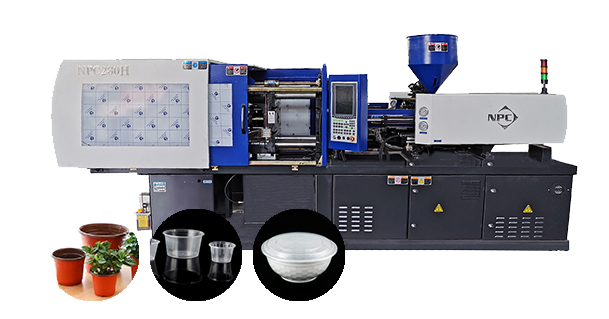

As more attention is devoted to the influence of humanity, providing sustainable materials and methods becomes increasingly important in protecting our future.
Plastic producers have a vested interest in inventing and promoting products and practices that will allow partners, industry, and end-users to prosper and grow for many years to come.
From biodegradable and recyclable plastic polymers to environmentally friendly designs and practices, sustainable standards are enhancing plastic injection molding and providing a more environmentally responsible process from conception until it is finished.
Making use of advancements at every level and in every part of the production process adds up to a significant improvement in establishing a "green" standard.
The green standard and sustainability are achievable with the use of an injection molding machine.
By definition, the process of the plastic injection molding technique produces little waste because only the total amount of plastic required for every cycle is consumed.
Rapid, automated manufacturing and lightweight products lead to lower energy and transportation costs, promoting sustainability and lowering the injection molding plastics' carbon footprint.
This makes it fairly comparable to other processes.
Rapid prototyping innovations also mean less waste and more efficient, high-quality outputs.
Because exactly the amount of plastic required for a product is pressed into a mold, injection molding is a natural low-waste technique.
One can reduce waste by recycling whenever possible, optimizing manufacturing runs to maximize efficiency, together with conserving energy.
This deliberate approach of strategy will enhance product design and production processes.
Recycling processes, new plastic resins, and additives produced from renewable source materials are all examples of innovation.
PLA and PHA, are two of the most common bio-based plastic formulations that are generated from corn, sugar cane, and vegetable oil, respectively.
Filler updates substitute sustainable materials like pulverized coconut shells and rice hulls for typical metal, ceramic, or glass reinforcements.
Ongoing research provides an increased spectrum of novel materials regularly.
While bio-based plastics can outperform their traditional, petroleum-based equivalents, there are some cases where the old formulations are a superior fit.
In these circumstances, injection molding machines are carefully designed to maximize the application of easily recyclable plastics while also considering product lifespan.
It is believed that sustainability and environmental concerns should not be restricted to only production methods, thus most manufacturers aim to make their facilities as environmentally friendly as possible.
This includes employing LED lights and recycling rainwater to cool our equipment whenever possible.

Despite the public shaming that plastics frequently receive, much of the criticism directed towards this valuable and adaptable material is erroneous.
This does not correspond to the entire world of today's plastic resins.
Many recyclable, bio-based, and biodegradable plastic resins are accessible, promoting the use of reusable, renewable, and bio-based materials.
We are passionate about sustainability and endeavor to offer environmentally friendly materials and injection molding machine methods.
Contact us immediately to start planning your injection molding operation and take benefit of our years of expertise.
By continuing to use the site you agree to our privacy policy Terms and Conditions.